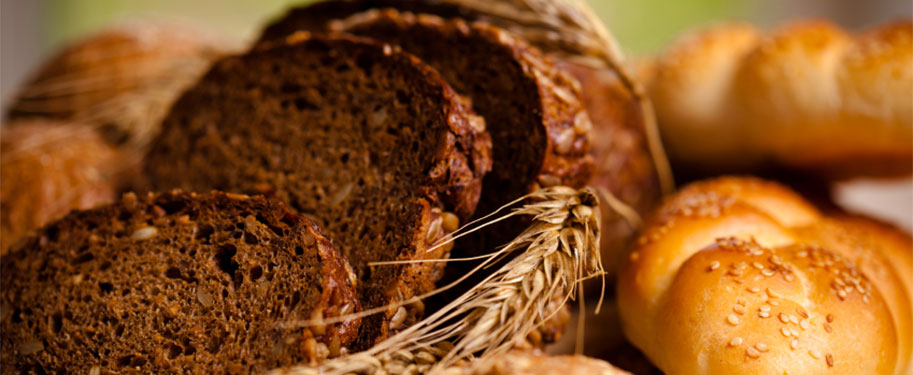“Whole grain.” The term seems to be popping up everywhere from your breakfast cereal and bread to your favorite chocolate chip cookies. But what exactly does it mean, and why is it so good for you? It all starts with a closer look at the grain.
Grain’s Anatomy
Some of the grains you’ve known and loved for years are “whole grains,” but you probably know them as wheat, corn, rice, oats, barley, quinoa, sorghum, spelt, and rye.
The fact is, all grains start out as “whole grains,” meaning they include all three parts of the grain:
- Bran—the outer layer
- Endosperm—the large inner portion
- Germ—the innermost “sprout”
When grain is refined—often to produce a lighter, finer flour—the bran and germ are stripped away along with about 25% of the grain’s protein and at least seventeen key nutrients. Processors add back some vitamins and minerals to enrich refined grains, so they still contribute some valuable nutrients. But whole grains are healthier, providing more protein, more fiber and many important vitamins and minerals. Eating whole grains has even been linked to a reduced risk of heart disease, stroke, cancer, diabetes, and obesity.
Closing the Whole Grain Gap
To get the optimum benefit from whole grains, the 2005 Dietary Guidelines recommend that at least half of the grains you eat are whole grains, and that you eat at least three servings of whole grains every day. Yet the average American eats less than one daily serving of whole grains, and over 30% of Americans never eat whole grains at all. Luckily, it’s easier than you think to gain the benefits of whole grains. Here are a few simple tips to get you started.
Brown or Wild Rice
- Use anywhere you would normally use white rice.
- Try brown rice as a side dish, in soups, pilafs, burritos, and stuffed bell peppers.
- To drastically reduce the cooking time, soak brown rice in water overnight.
Bulgur & Barley
- Bulgur is a pre-cooked whole wheat that can be used in place of rice or pasta.
- Add bulgur to soups, salads, or side dishes for added flavor.
- Add barley to soups and casseroles.
Rolled Oats or Oatmeal
- Add rolled oats to your favorite cookie or muffin recipes, pancakes, or in place of flour or breadcrumbs in dishes such as meatloaf.
- Quick or old-fashioned oats can be substituted for 1/3 of the flour called for in biscuits, scones, and shortcakes.
- Oats add a heartier texture and mild nutty taste.
Corn
- Add to salsa, burritos, casseroles.
- Use corn as a colorful side dish.
- Use cornmeal in place of flour.
- Eat popcorn as a healthy snack (just go light on the salt and butter).
Whole Wheat Flour
- Use in homemade bread and other products.
- Try ½ whole wheat flour and ½ white flour.
- Use whole wheat pasta.
- When buying bread products, look for “whole wheat flour” as the first ingredient.



